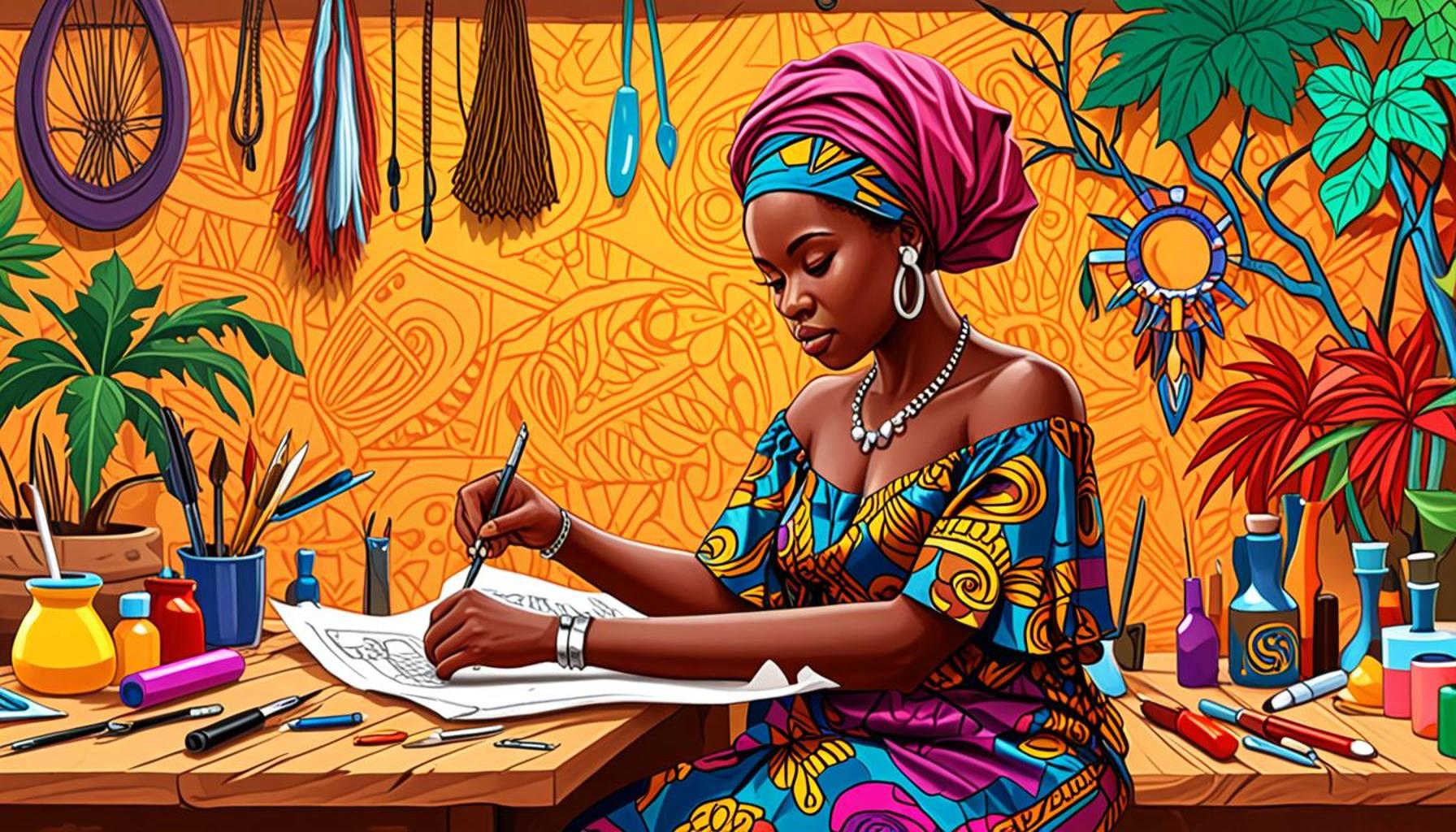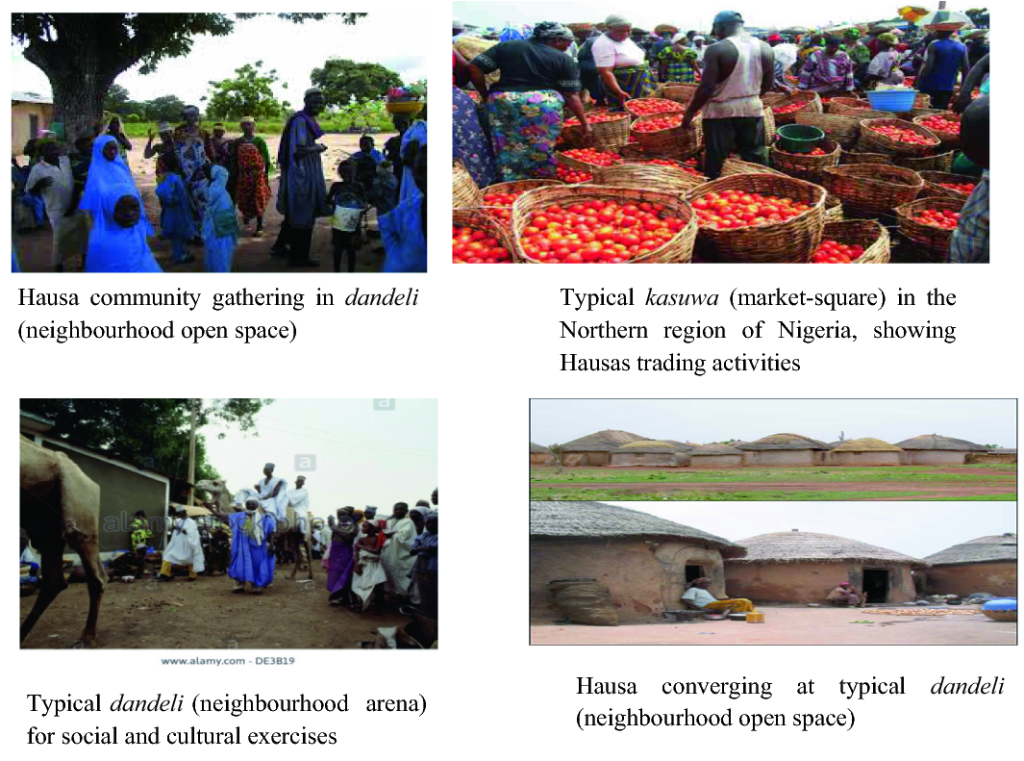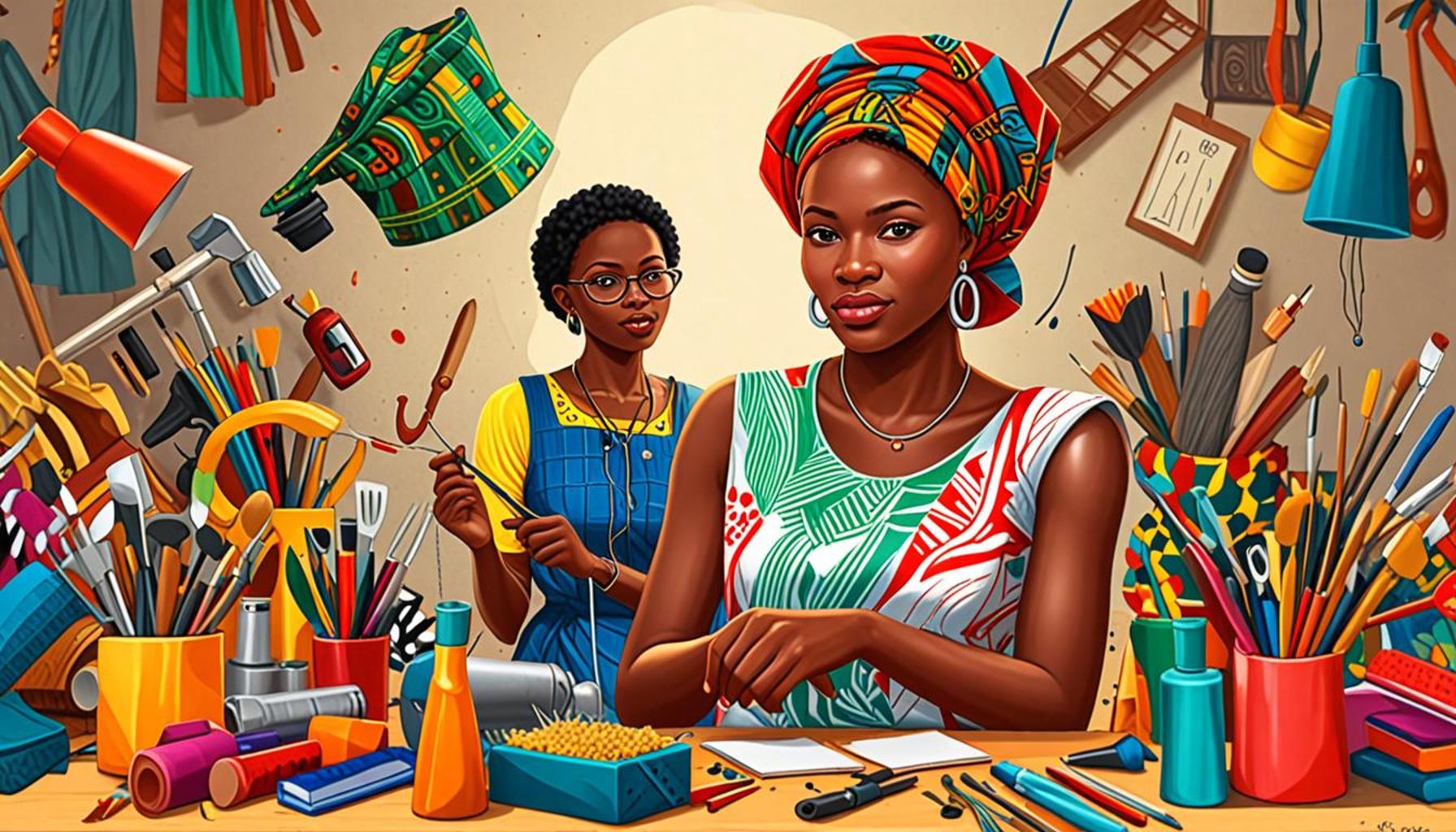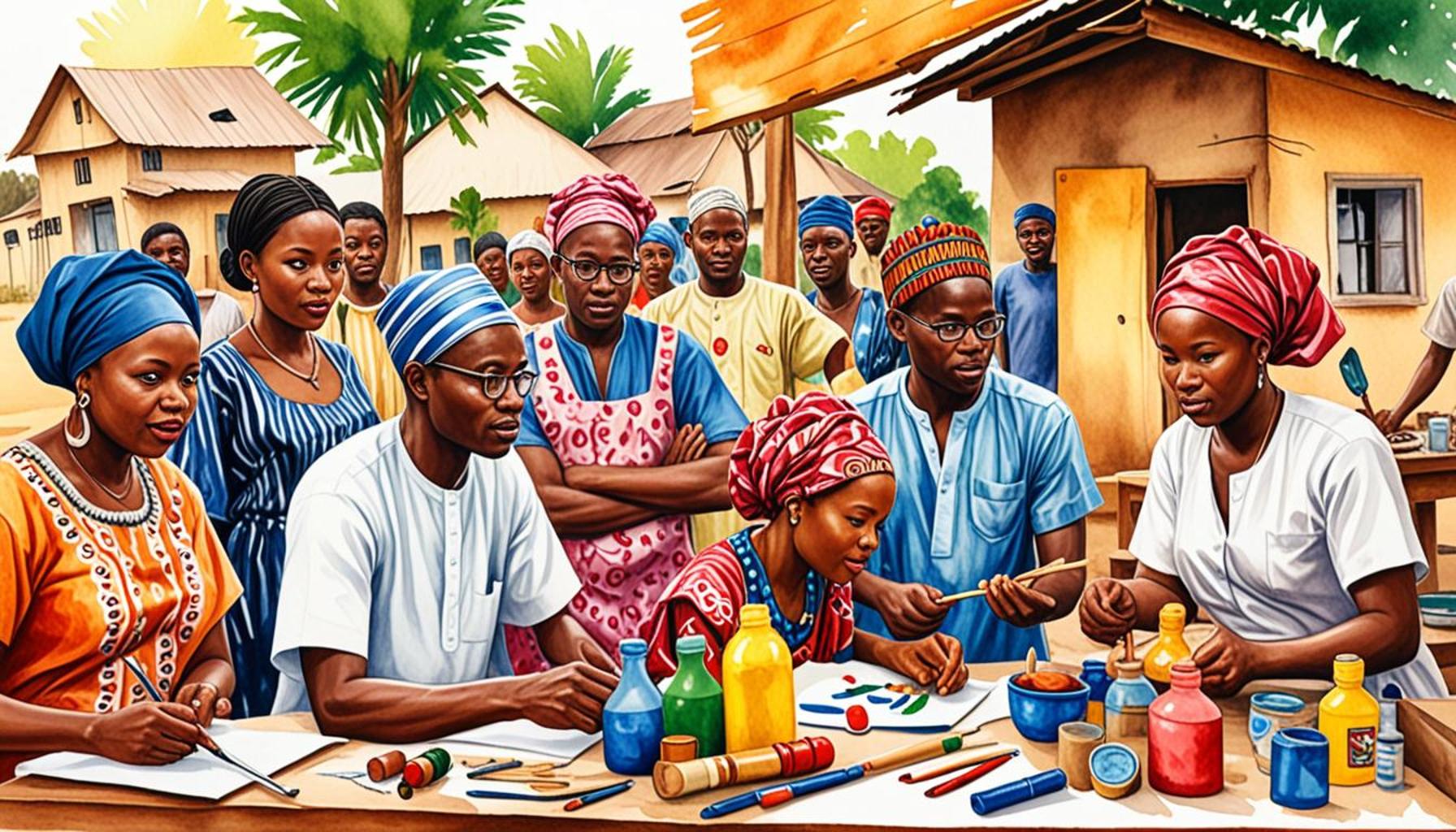The Influence of Digital Media on the Revitalization of Local Handicrafts: New Paths for Nigerian Creators

Understanding the Impact of Digital Media on Handicraft Culture
The integration of digital media and local handicrafts is not merely a trend; it is a powerful movement catalyzing a cultural renaissance across Nigeria. Utilizing platforms such as Instagram, Facebook, and Etsy, artisans are now able to transcend geographical boundaries, offering a wealth of unique creations that reflect their rich heritage. This technological shift is not only igniting renewed interest in traditional arts but is also paving the way for a revolutionary future for countless Nigerian creators.
Several critical factors have contributed to this revitalization of handicrafts in the digital space:
- Wider reach: Artisans can display their work to a global audience, reaching potential customers who are interested in distinct cultural patterns and handmade products. For instance, a bead maker from Lagos can showcase intricate pieces to buyers from as far away as the United States or Europe, who are increasingly looking for authentic African art.
- Direct sales: By eliminating intermediaries, artisans can earn a higher profit margin on their goods. This not only increases their income but also allows them to invest more into their craft. For example, a textile maker selling directly through their online shop can keep prices competitive while enhancing the quality of their products.
- Community engagement: Social media platforms serve as gathering spaces for both artisans and buyers, fostering a sense of belonging. Artisans can share their experiences, showcase their processes, and engage in dialogues that celebrate Nigerian culture, thus creating an inclusive community around their work.
The embrace of digital transformation empowers craftsmen and women to narrate their stories and heritage, enriching the cultural tapestry of Nigeria. With online markets more accessible than ever, consumers are increasingly drawn to purchasing authentic, handmade products directly from the source. This shift is pivotal, as it elevates local handicrafts and challenges preconceived notions regarding traditional versus contemporary practices.
Nigeria’s entry into this new digital era has profound implications for local artisans. By leveraging digital platforms, artists can not only market their work but also firmly establish their presence in the global market. The opportunity for partnerships with international buyers and organizations is expanding, leading to new avenues for collaboration that could redefine Nigerian art.
This article aims to explore how the convergence of technology and tradition is reshaping the landscape for Nigerian handicrafts and its creators. As local artisans continue to navigate this evolving digital terrain, their stories and creations become vital elements in fostering a renewed appreciation for the cultural wealth that Nigeria offers. The world is watching, and as these artisans step into the spotlight, they not only advocate for their craft but also illuminate the vibrancy of Nigerian culture for a global audience.

LEARN MORE: This related article may interest you
Digital Platforms: A New Canvas for Creativity
The advent of digital media has opened up unprecedented avenues for Nigerian artisans to showcase their craftsmanship. In a landscape where traditional methods were often confined to local markets, digital platforms have emerged as vibrant galleries. Artisans can now exhibit their unique creations to a worldwide audience, gaining recognition that was previously unimaginable. The rise of social media has democratized art consumption, allowing consumers direct access to the creators of traditional crafts from across the nation.
One of the most significant benefits of digital media is the ability to tell stories. Each piece of handicraft carries a narrative deeply rooted in Nigeria’s diverse cultures. With the help of platforms such as Instagram and Twitter, artisans are able to share the stories behind their creations—whether it be a vibrant fabric designed from the patterns of the Yoruba culture or detailed carvings that echo the traditions of the Igbo people. This storytelling aspect not only enriches the buyer’s experience but also fosters a deeper connection between creators and consumers.
The following pivotal elements illustrate how digital media is reshaping the engagement between Nigerian artisans and the global marketplace:
- Skill Development: Online courses and tutorials are becoming increasingly accessible, allowing artisans to refine their skills. For example, a woodworker in Enugu can learn modern design techniques or marketing strategies through online workshops, enabling them to blend traditional craftsmanship with contemporary aesthetics.
- Collaborative Opportunities: Digital platforms facilitate collaborations between creators and influencers, artists, and designers. This synergy has the potential to elevate traditional crafts into global trends, as seen with collaborations that feature local prints in international fashion collections.
- Market Testing: Artisans can gauge consumer preferences more quickly through social media engagement. By sharing prototypes of new designs or products, artisans receive real-time feedback, allowing them to adapt their offerings to meet market demands effectively.
Moreover, the accessibility of e-commerce platforms like Etsy or African craft marketplaces allows artisans to create bespoke collections tailored for specific audiences. This direct customer engagement not only empowers artisans but also helps them adapt their crafts to align with emerging global trends. For example, a Nigerian ceramicist might discover that buyers are interested in eco-friendly products, prompting them to explore sustainable materials in their designs.
As the digital landscape continues to evolve, traditional artisans are harnessing social media to brand themselves authentically. The image they portray through curated content, whether it be vibrant images of their work or behind-the-scenes glimpses into their production process, plays a crucial role in branding. Such visibility enables artisans to build loyal customer bases who appreciate not just the products, but also the stories of resilience and heritage they embody.
| Advantage | Impact |
|---|---|
| Increased Visibility | Digital media platforms enable local artisans to reach a wider audience beyond geographical barriers, showcasing their unique work to potential customers globally. |
| Market Accessibility | Through e-commerce and social media, Nigerian creators can easily access new markets, fostering sales opportunities and ensuring sustainable income for artisans. |
The influence of digital media on local handicrafts is profound, offering solutions that encourage revitalization and adaptation. Artisans in Nigeria are particularly benefiting from this digital shift as they find innovative ways to connect with consumers, telling the stories behind their creations. This storytelling aspect is crucial; it adds emotional value and authenticity to the purchases, enticing buyers who increasingly seek meaningful products.Moreover, the integration of digital marketing strategies empowers artisans to promote their work effectively, moving them from traditional marketplaces to dynamic online platforms. This transformation not only generates revenue but also promotes cultural heritage and the preservation of local craftsmanship in an ever-globalized marketplace. By participating in online communities and leveraging social media, these artisans are shaping their own narratives, allowing their craft to evolve while maintaining its cultural essence.
CHECK OUT: Click here to explore more
Reaching New Audiences: Expanding Market Horizons
In the realm of local handicrafts, digital media is not merely a tool; it is a launch pad for artisans to venture beyond their traditional customer base. The internet has transformed the market landscape, granting artisans access to far-reaching audiences that transcend geographical boundaries. Platforms like Facebook Marketplace and Instagram Shops empower artisans, allowing them to sell directly to consumers across the globe. As a result, a beaded necklace handmade in Lagos can find a buyer in New York or Berlin, creating a global appreciation for Nigerian craftsmanship.
Furthermore, the role of influencers and bloggers in promoting local handicrafts cannot be overstated. With their substantial followings, these digital personalities amplify the visibility of artisan products, drawing attention to the rich heritage and intricate workmanship involved. A mention by an influential fashion blogger can lead to a surge in requests for traditional attire made from local fabrics, as seen in the growing popularity of Ankara prints in global fashion circles. This influence enhances the appeal and desirability of local crafts, driving demand beyond traditional confines.
To capitalize on these new opportunities, artisans are employing targeted marketing strategies tailored to their audience’s preferences. For instance, a Nigerian artisan creating home decor items may leverage Instagram ads to reach interior designers and home improvement enthusiasts. This focused approach allows for a more nuanced marketing strategy that aligns the artisan’s offerings with market trends, making it easier to navigate the competitive digital marketplace.
The integration of digital media extends beyond mere sales; it fosters a strong sense of community among artisans. Online forums and groups dedicated to specific crafts facilitate knowledge sharing and mutual support. Various artisan collectives in Nigeria have turned to platforms like WhatsApp and Telegram to exchange ideas, promote their work, and organize joint ventures, effectively harnessing the power of digital camaraderie. This not only stimulates creativity but also cultivates a supportive ecosystem essential for growth and sustainability.
Leveraging Data Analytics for Growth
In this digital age, data analytics have become an indispensable resource for artisans. Platforms provide valuable insights into consumer behavior, preferences, and trends, allowing artisans to make informed decisions on design and marketing strategies. For instance, by analyzing engagement metrics on social media posts, an artisan can determine which product styles resonate most with followers, thereby guiding future production. This data-driven approach positions artisans not only to create products but to craft experiences that resonate with their audience.
Additionally, e-commerce platforms equipped with analytical tools can help artisans optimize their online storefronts. By assessing which items sell best, artisans can streamline inventory, focus on popular designs, and phase out underperforming products. These insights are pivotal in maintaining competitiveness in an increasingly saturated market, where consumer preferences can shift rapidly.
Empowerment through Digital Narratives
As artisans establish their online identities, the narratives they share contribute significantly to their brand allure. Exploring the personal journey behind each creation—such as the struggles faced in preserving traditions or the inspiration from Nigeria’s varied landscapes—adds layers of meaning that appeal to socially conscious consumers. Detailed posts that highlight the maker’s process, coupled with visually striking images, effectively engage an audience yearning for authenticity.
This empowerment through storytelling not only uplifts the artisans but also educates consumers about the cultural significance of their purchases. As buyers increasingly seek connections with the products they choose, this narrative-driven marketing approach strengthens the artisan’s brand and enhances customer loyalty.
Thus, digital media serves as a robust catalyst for the revitalization of local handicrafts, uniting creativity, storytelling, and commerce in ways that transform livelihoods and cultural expression across Nigeria.
YOU MAY ALSO LIKE: Read read another article
Conclusion
In conclusion, the influence of digital media on the revitalization of local handicrafts in Nigeria cannot be overstated. Digital platforms are transforming the way artisans connect with consumers, offering unprecedented opportunities for expansion and global reach. The newfound accessibility allows for a flourishing appreciation of indigenous craftsmanship that transcends borders and unites diverse cultural narratives through charming handcrafted items. Artisans no longer rely solely on local markets but have become integral players in the global economy, showcasing their unique creations on platforms from Instagram to e-commerce sites.
The power of storytelling through digital media has also emerged as a crucial tool for artisans, enhancing brand identity and creating authentic connections with consumers. As individuals increasingly prioritize sustainable and culturally rich products, understanding the journey of each craftsmanship adds value to their purchases, fostering loyalty and community support. The collaboration among artisans through online networks fosters creativity and innovation, establishing a thriving ecosystem where traditional skills are adapted to contemporary tastes.
As we look to the future, artisans must continue to leverage technology, utilizing data analytics and strategic marketing to navigate the ever-changing landscape of consumer preferences. Emphasizing their heritage while engaging with modern trends offers a promising pathway for growth. Thus, the ongoing embrace of digital innovation holds the key to sustaining Nigeria’s rich handicraft traditions while simultaneously opening avenues for economic empowerment and cultural expression. The journey from local markets to the global stage exemplifies a remarkable transformation, inviting both artisans and consumers to celebrate the beauty of Nigerian artistry in this digital age.


